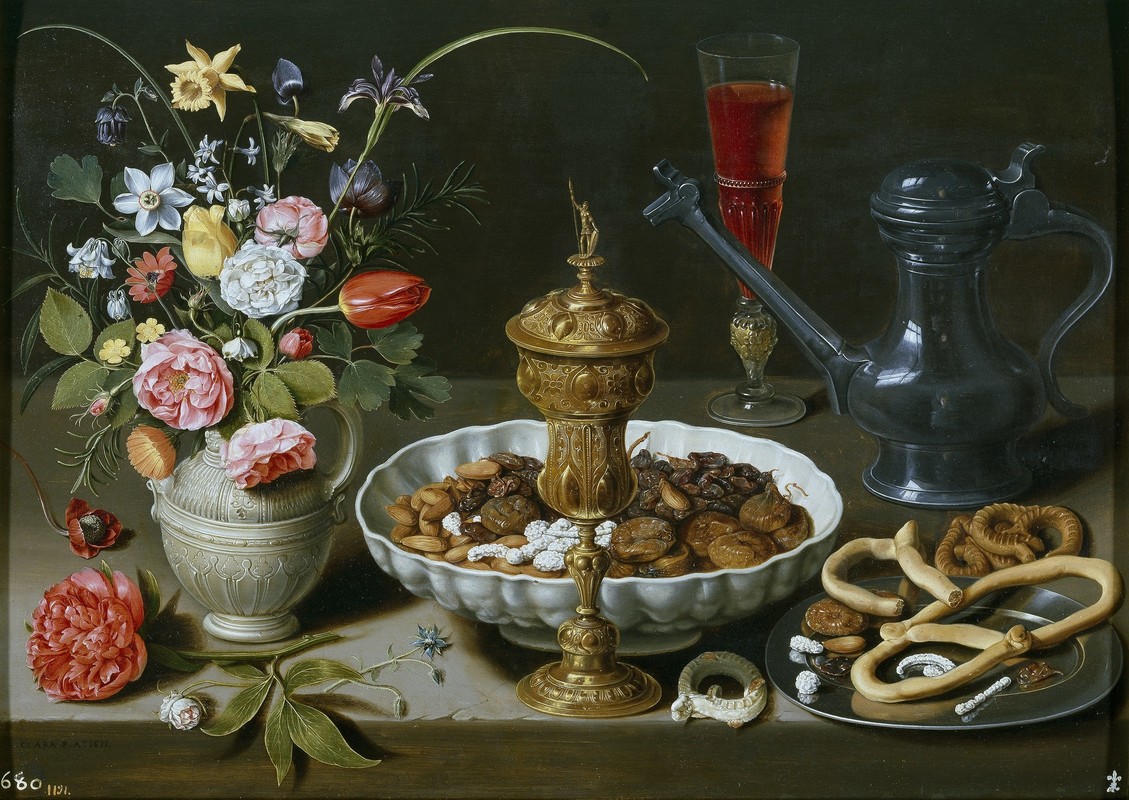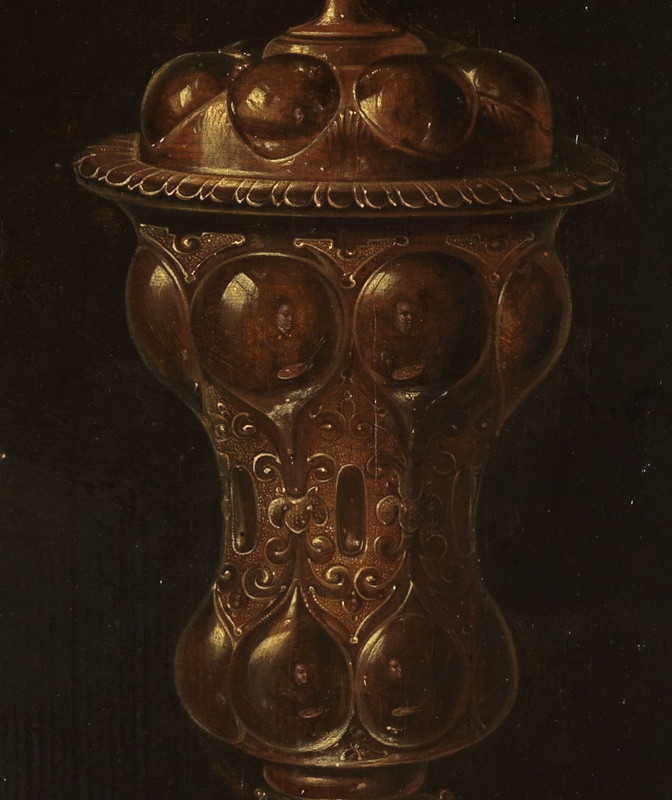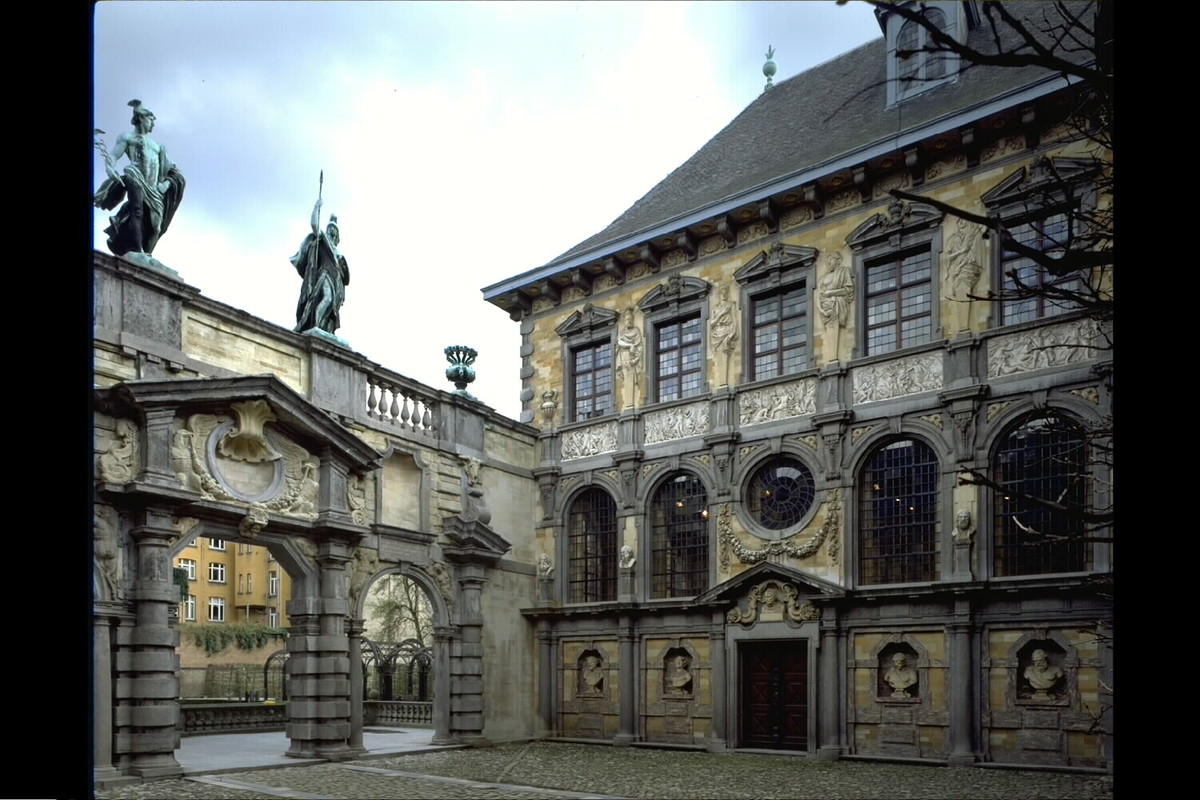
Pieter Paul Rubens, The Adoration of the Magi | Antwerp, KMSKA Royal Museum of Fine Arts
The Adoration of the Magi
Rubens and the Baroque
In 1624 Peter Paul Rubens painted a monumental work for the high altar of Saint Michael’s Abbey in Antwerp. The subject was a familiar Biblical scene: the visit of the three kings to the newborn Christ-child. The abbey no longer exists, but the painting remains a high point in Baroque art.
Rubens places us in the middle of the Christmas stall where Mary is showing her son Jesus to the three wise men from the East. The painter has used every means at his disposal to evoke the excitement surrounding the birth. The onlookers with their lively facial expressions look on or express their amazement with gestures. The presence of exotically dressed figures is also striking. The Ethiopian king Balthasar dominates the middle section of the painting. The palette is particularly colourful. The reddish-brown tints give the scene a warm glow. Rubens used assured brushstrokes and used chiaroscuro effects. His technique enabled him to paint fast, so that he could keep up with the stream of orders.

Kris Vandevorst
The basilica of Our Lady of Scherpenheuvel breathes the spirit of the Counter-Reformation. This star-shaped, cupola-topped church is the masterpiece of the architect Wenzel Coebergher (1557-1634) and was built after being commissioned by the arch-dukes Albrecht (1559-1621) and Isabella (1566-1633) to give thanks for the capture of Ostend from the Calvinist rebels from the Northern Netherlands (1604). The Baroque basilica is today the best-known shrine of the Virgin Mary and place of pilgrimage in Flanders.
Rubens and the Baroque
Peter Paul Rubens was born in 1577 near Cologne. After the death of his father his mother returned to Antwerp, where the family came from. Rubens trained as a painter and in 1600 left to spend eight years in Italy. There he was inspired by artists like Titian and Caravaggio. Back home Rubens emerged as an exceptionally productive master, who practised every genre. Besides landscapes and portraits he painted religious and mythological scenes on a large scale. For these he drew on his wide knowledge of Classical antiquity and literary traditions. In his studio in Antwerp he made oil sketches, which his pupils worked in large format. More than two thousand paintings left his studio.
With his religious works Rubens supported the Counter-Reformation. This was the Catholic church’s answer to Protestantism. With the Counter-Reformation the church not only initiated internal reform, but wanted to make its own teachings attractive again. The flamboyant Baroque style proved particularly suited to focusing on religious truths. Because of the Iconoclastic Fury many works of art had disappeared from churches. The art of the Counter-Reformation brought Mary and the saints back triumphantly. Imposing altarpieces and sculptures were designed to appeal to church visitors with easily recognisable subjects. This new décor changed the interior of many church buildings.
Focal points
Discover more on this topic
Non-fiction
Van Dyck: The Anatomy of Portraiture
Yale University Press, 2016.
Rubens, Van Dyck & Jordaens. Vlaamse schilders uit de Hermitage
Mercatorfonds, 2011.
Van Dyck. A Complete Catalogue of the Paintings
Yale University Press, 2004.
Een huis vol kunst: Rubens als verzamelaar
BAI, 2004.
Rubens: De schilder van mythen en goden
Meulenhoff, 2017.
Rubens’s House
Brepols, 2022.
Liefde, leed en passie: de vrouwen van Rubens
Van Halewyck, 2002.
The Age of Rubens. Diplomacy, Dynastic Politics and the Visual Arts in early seventeenth-century Europe
Brepols 2016.
Van Dyck and the Making of English Portraiture
Yale University Press, 2022.
Van Quinten Metsijs tot Peter Paul Rubens
BAI, 2009.
Jordaens. The Making of a Masterpiece
Statens Museum for Kunst, 2008.
De Grote Rubens Atlas
Lannoo, 2018.
Rubens doorgelicht: Schilderijen uit verdwenen Antwerpse kerken
Snoeck, 2013.
Pieter Paul Rubens
De Bezige Bij, 2004.
De Brieven Van Rubens
De Bezige Bij, 2006.
Oude meesteressen: vrouwelijke kunstenaars in de Nederlanden
Van Halewyck, 1998.
Black is Beautiful. Rubens tot Dumas
WBooks, 2008.
Rubens. Schilder van schetsen
Museum Boijmans Van Beuningen, 2022.
De meester van de schaduw: Peter Paul Rubens, geheim agent
De Bezige Bij, 2009.
De mooiste meesterwerken van Rubens
Het Laatste Nieuws, 2004.
Overzicht van leven en werk van de Vlaamse schilder (1577-1640)
Snoeck, 2004.
Rubens privé: de meester portretteert zijn familie
Marot, 2015.
Hoofd- en bijzaak. Portretkunst in Vlaanderen van 1420 tot nu
Davidsfonds –Waanders Uitgevers, 2008.
Van Dyck
Lannoo, 1998.
Elck zijn waerom: vrouwelijke kunstenaars in België en Nederland, 1500-1950
Ludion, 1999.
Copyright Rubens: Rubens en de grafiek
De Bezige Bij, 2004.
Sensatie en sensualiteit: Rubens en zijn erfenis
Mercatorfonds, 2014.
Rubens: een genie aan het werk
Lannoo, 2007.
Jordaens en de Antieken
Mercatorfonds, 2012.
Rubens and the Human Body
Brepols, 2018.
The Young Van Dyck
Thames & Hudson, 2013.
Anthony Van Dyck and the Art of Portraiture
Modern Art Press, 2021.
Rubens en Breughel: een artistieke vriendschap
WBooks, 2006.
Fiction
De Graveur
Horizon, 2022.
Rubensrood
Triloga, 2007.
Het geheim van de Vlaamse Meesters
De Eenhoorn, 2019. (9+)
Suske en Wiske: De Raap van Rubens (nr. 109)
Standaard, 1977.
















